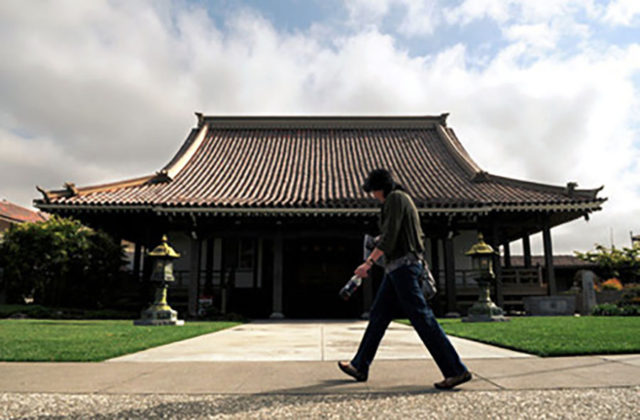by Cammie Kaneko, For The North Ameican Post
An hour south of San Francisco and a short drive from popular coastal cities like Monterey and Santa Cruz, San Jose is an often overlooked and ignored city of more than 1 million people. However, growing up in San Jose as a child and teenager, I saw the culture and history it held.
My favorite part of my hometown, the part I hold closest to my heart, is San Jose’s Nihonmachi. It is one of three remaining Japantowns left in California – there were more than two dozen before World War II – the other two are found in Los Angeles and San Francisco.
San Jose’s tight-knit Nikkei community got started around 1890 when the Japanese migrated to Santa Clara Valley to work in the area’s abundant farm land. By the early 20th century, Nihonmachi was established, providing Japanese Americans with cultural support, employment, goods, social life, and a community uniquely their own. But like so many Nihonmachis that dotted America’s West Coast, the neighborhood’s Japanese and Japanese Americans were forced to leave during World War II and were taken to incarceration camps. Most of the buildings were vacant during this time. In 1945, the Japanese were allowed to return and Nihonmachi provided a safe space for Japanese Americans to feel protected from the anti-Japanese racial hysteria that happened after the war. Today, generations of Japanese Americans inhabit Nihonmachi and many Yonseis, such as myself, have fond memories of growing up there.
I have vivid recollections of going to the San Jose Buddhist Church Betsuin and sitting in the pews, laying on my mom’s lap, smelling the strong scent of incense and old books. Since then, every time I smell incense, I am reminded of the Sundays spent listening to reverends talk and people chant. Across the street, I would attend Dharma School, where kids of all ages were educated on the values and principles that aligned with the Buddhist teachings. If I was well behaved during church, my parents took me to Shuei-Do Manju Shop. There, I would pick my favorite manju (pink with white smooth beans) and shaved ice in the summer.

In the summer, I would also attend Obon. Obon is a three-day summertime festival, dedicated to honoring our ancestors. When I was younger, my mom would dress me up in a kimono and I would dance to traditional Japanese music during the festival. I loved to dance, especially because the dancers were given ice cream cups at the end! I would also play all the games, such as ring toss and bingo. One year I even won a goldfish. My dad would volunteer at the strawberry shortcake stand, and I would run around the festival eating yummy food and playing with my cousins and friends.
San Jose’s Nihonmachi is full of amazing places to eat. My personal favorite is Sushi Maru. I have been going to Sushi Maru since I was a little kid; the hostesses and chefs knew my family by name and order. We would sit in a big wooden booth and my dad was immediately handed two smelly natto makis (fermented bean rolls). At the end of dinner, my brother and I were always offered ice cream. Between my whole family, we have probably tried everything on their menu, but our favorites stay the same: the dragon roll, udon and tekkamaki are my personal favorites.
Hukilau was our other favorite restaurant. We loved to go here with our extended family as well. The food is amazing; saimin (Hawaiian noodle dish) was always my go-to. They have a separate back room for big parties, and I have fond memories of my family filling that space, stuffing our faces with wonderful Hawaiian food, and leaving full and happy.
Living in Seattle, there are many great Japanese restaurants and even the night market at the end of the summer to satisfy my Japanese food cravings. Whenever I enjoy manju or a bowl of udon here in Seattle, I get nostalgic for San Jose’s Nihonmachi, and sentimental for my childhood memories from my favorite hometown neighborhood.
If you’re in San Jose, explore the city’s Nihonmachi using this helpful website (http://www.jtown.org/).





